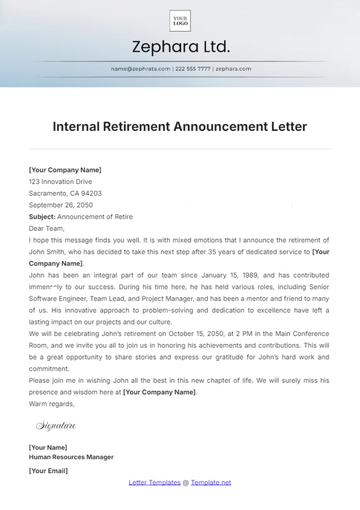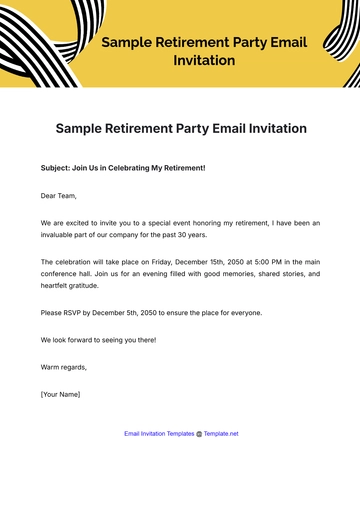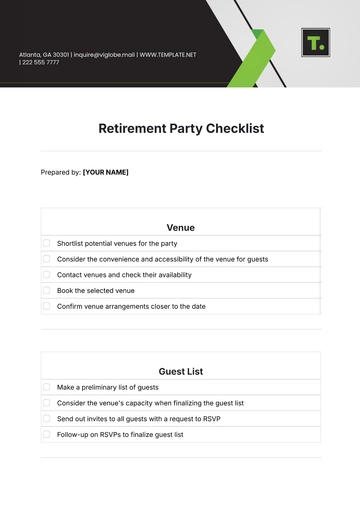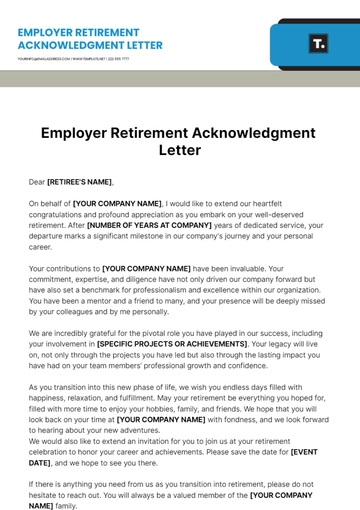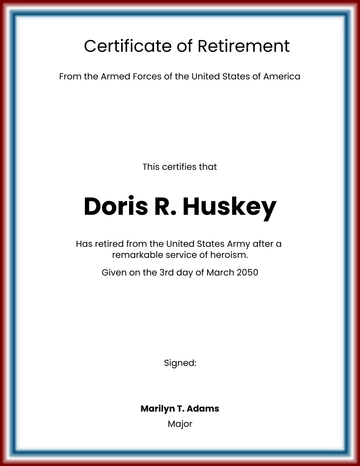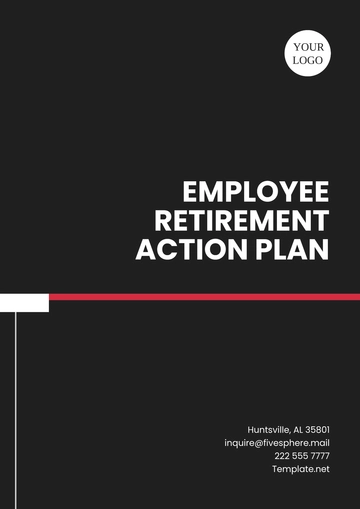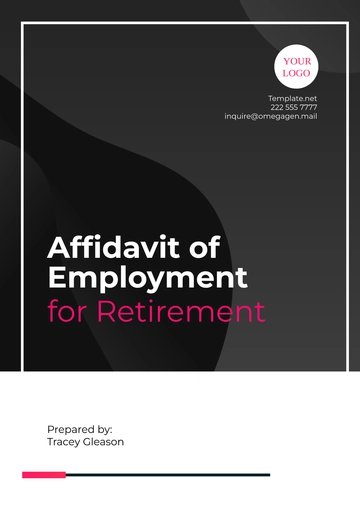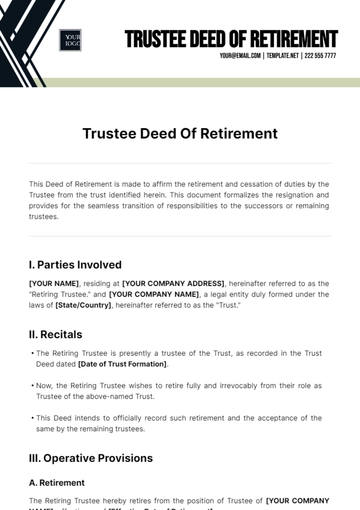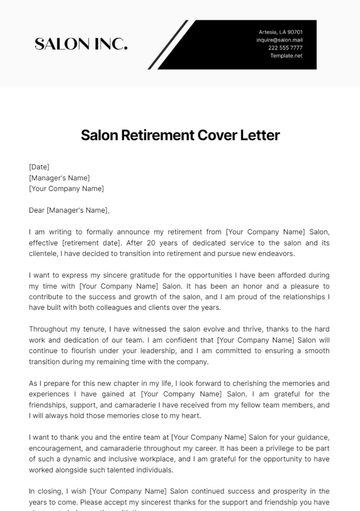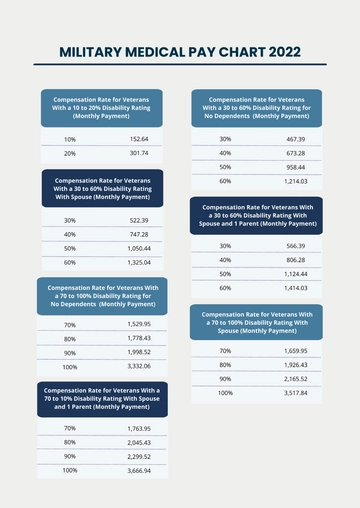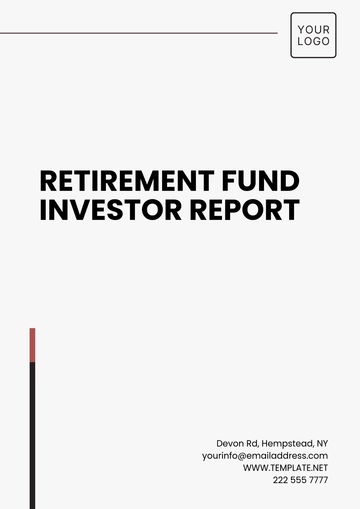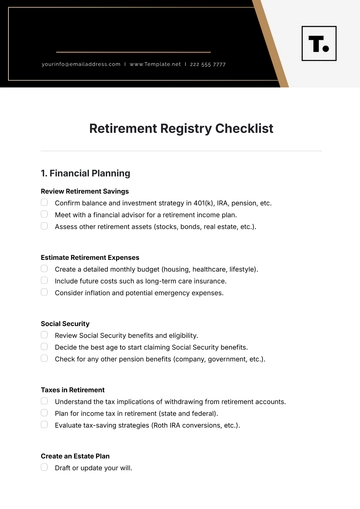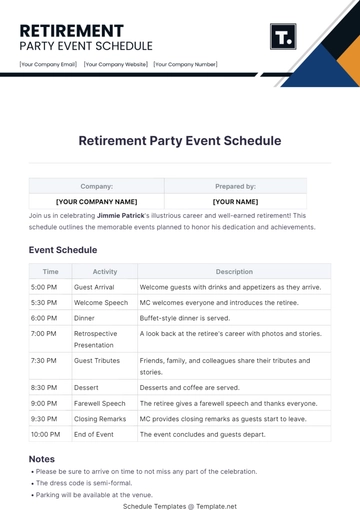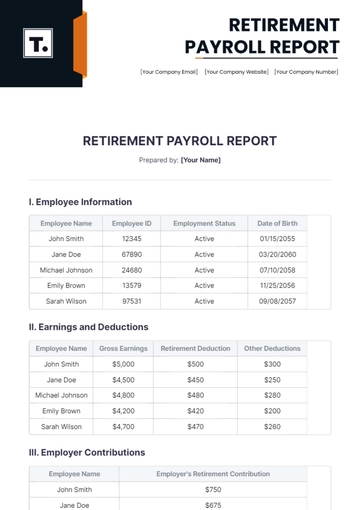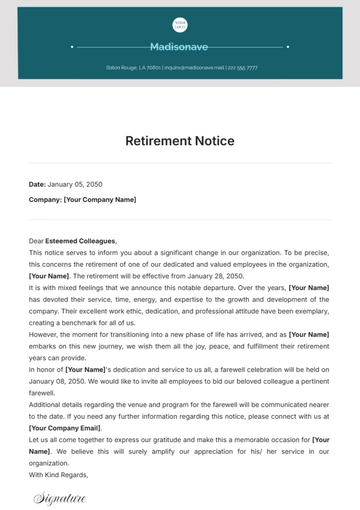Free Retirement Options Brief
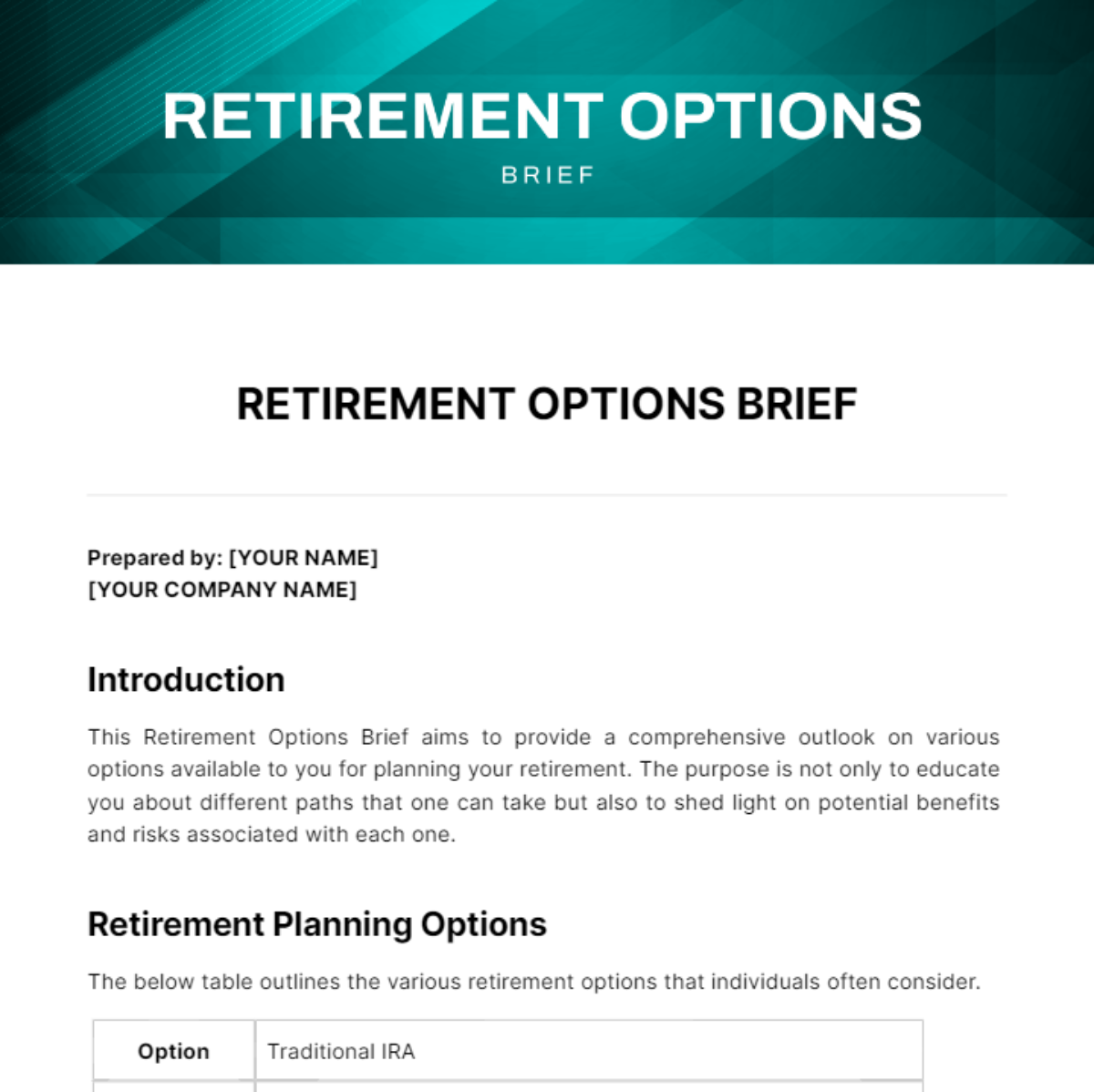
Prepared by: [YOUR NAME]
[YOUR COMPANY NAME]
Introduction
This Retirement Options Brief aims to provide a comprehensive outlook on various options available to you for planning your retirement. The purpose is not only to educate you about different paths that one can take but also to shed light on potential benefits and risks associated with each one.
Retirement Planning Options
The below table outlines the various retirement options that individuals often consider.
Option | Traditional IRA |
Description | An account you contribute pre-tax income into, that grows tax-free until withdrawn at retirement. |
Benefits | Tax deductions, No income limits for contributions |
Risks | Taxable upon withdrawal, Penalties for early withdrawal |
Investment Choices for Retirement
Investment choices for retirement can significantly impact the quality of life during one's retirement years. It's essential to choose investments that align with your risk tolerance, financial goals, and the time frame until retirement. Here's a brief overview of the options you mentioned:
1. Stocks
Risk Level: Higher
Potential Returns: Higher potential returns compared to many other investment types.
Considerations: Investing in stocks is suitable for those who have a longer time horizon and can tolerate market volatility. Diversification across different sectors and companies is crucial to mitigate risk.
2. Bonds
Risk Level: Lower to Medium
Potential Returns: Generally offer lower returns than stocks but with less volatility.
Considerations: Bonds are loans to governments or corporations that pay back the principal with interest. They are considered safer investments than stocks, making them a suitable choice for individuals closer to retirement or with a lower risk tolerance.
3. Mutual Funds
Risk Level: Varies
Potential Returns: Depends on the mutual fund's specific strategy and holdings.
Considerations: Mutual funds pool money from many investors to buy a diversified portfolio of stocks, bonds, or other securities. They offer diversification and professional management but come with management fees. They can range from conservative (like bond funds) to aggressive (like growth stock funds), allowing investors to choose according to their risk tolerance and investment goals.
4. Real Estate
Risk Level: Medium to High
Potential Returns: Can offer both income (through rent) and capital appreciation.
Considerations: Real estate requires a significant initial investment and ongoing management. It can be a good source of passive income and a hedge against inflation. However, real estate markets can be volatile, and properties can be illiquid, meaning they can't always be quickly sold for cash.
5. Making the Choice
When deciding on the best investment choices for retirement, consider the following:
Diversification: Don't put all your eggs in one basket. A mix of different types of investments can reduce risk.
Time Horizon: Your investment choices should reflect the time left until retirement. Longer horizons can usually withstand more volatility.
Risk Tolerance: Assess how much market volatility you can handle without panicking. Higher risk can lead to higher rewards, but can also lead to significant losses.
Financial Goals: Define what you want your retirement to look like and calculate how much you'll need to save to fund it. This can help guide your investment decisions.
Retirement Life Stage Planning
Your retirement plans can vary significantly based on which life stage you are in. Understanding your financial needs for each stage can help shape your retirement plan. This section outlines some essential things to consider in each life stage:
Early Career: At this stage, it's crucial to start saving and investing as much as you can. The earlier you start, the better chance you have of reaching your retirement goals.
Mid-career: As your income increases, you should increase your retirement savings. It's also a good time to review your retirement targets and adjust your plans as needed.
Pre-Retirement: By now, you should have a clear picture of what your retirement might look like. Your focus should be on optimizing your savings and investments.
Summation and Next Steps
The journey towards achieving a secure and fulfilling retirement is paved with diligent planning and strategic decision-making. Each investment choice, from stocks and bonds to mutual funds and real estate, offers its unique set of benefits and risks, tailored to meet different financial goals and risk tolerances. Understanding these options is pivotal in crafting a retirement plan that not only meets your immediate needs but also secures your financial future.
By choosing to engage with [YOUR COMPANY NAME], you have embarked on a critical path towards financial security in your retirement years. Our commitment is to guide you through this intricate process, providing you with the expertise and resources necessary to make informed decisions.
- 100% Customizable, free editor
- Access 1 Million+ Templates, photo’s & graphics
- Download or share as a template
- Click and replace photos, graphics, text, backgrounds
- Resize, crop, AI write & more
- Access advanced editor
Navigate the future of financial planning with Template.net's Retirement Options Brief. This editable and customizable template lays out various retirement strategies, helping individuals and financial planners to tailor plans for a secure, comfortable future. Utilize our AI Editor Tool for personalization, ensuring preparedness for retirement.




